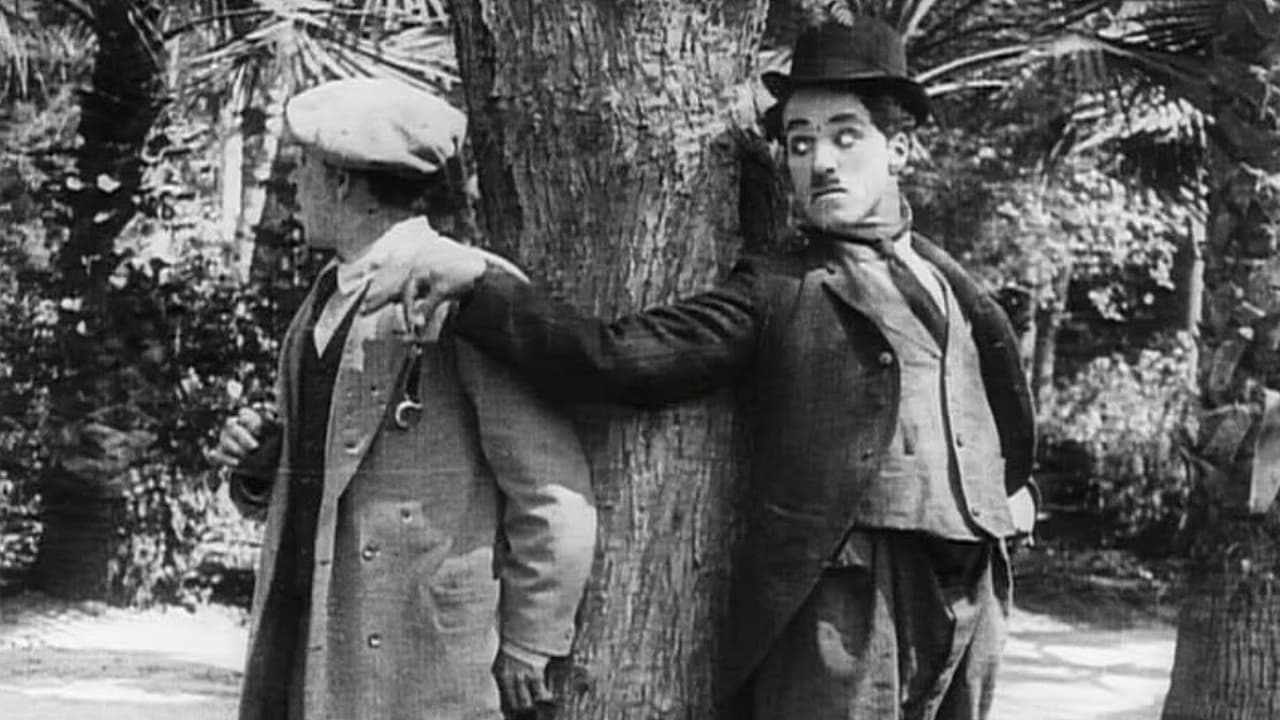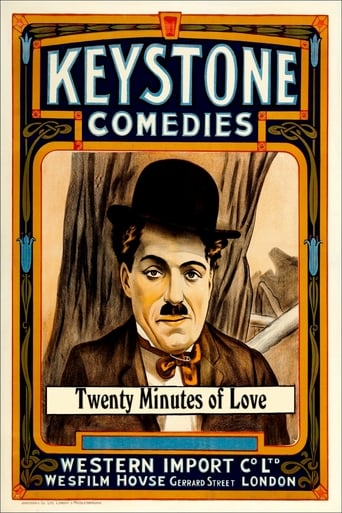

In his autobiography, Chaplin recorded that "Twenty Minutes of Love" had produced "continuous laughs throughout", even though it had been shot in a single afternoon. It has not weathered as well as many of his later comedies, but while re-watching all his shorts in chronological order, this is the earliest one in which I've found a laugh-out-loud moment of true hilarity (described in some detail below). It may not be coincidence that (in August of 1914, when his memory was fresher) Chaplin stated this was the first film he had directed himself.It's an early example of a "park" film, no more difficult to follow than others of the genre, once one has attuned one's attention to performance styles and conventions of the times. Luckily the film is short enough that it can easily be viewed multiple times without hardship, to help train one's eyes and mind to follow a story without sound.DETAILED BUT SMALL-SCALE SPOILER The various conflicts with various couples are pretty standard; the instant of magic for me involves a twice-stolen watch. Charlie has stolen it from the pocket of a man he does not know is a thief. Chased by the thief, and alarmed at the proximity of a policeman, Charlie attempts hurriedly to sell the hot watch to a man asleep on a park bench, who unbeknownst to Charlie, is the watch's original owner.The transaction (like all of Chaplin's silent conversations) is communicated brilliantly and (if you watch, and think) clearly in pantomime. We see Charlie offer the watch and set a price. We see the owner perceive the watch as familiar and check his pockets, discover his watch is missing and realise that this is indeed his own stolen watch being offered back to him.We see the owner try to tell Charlie that this is his watch, and Charlie agrees "yes, it's yours once you pay me". After a more forceful repetition from the man, Charlie understands that this man is claiming to be the true owner of the watch! It is Charlie's reaction of quickly pulling the watch back with suspicion, disbelief and resentment at what he considers so transparent an attempt at fraud, that I find still works so well.It's a complex set-up for the time, and modern audiences who through inexperience with the Keystone-era silent comedy find the fast-paced action confusing enough to lose track of the characters and their histories will miss it entirely. It's a very well-constructed gag, though - the audience alone knows the full truth, while each character has a partial view that seems to contradict the other's. The audience understands perfectly the confusion of the characters. (Alas that the dissection of gags is never as funny as the gags themselves.) There are other laughs in the movie, but for me this was the best by far.
... View MoreHistorically noted as Chaplin's directing debut, the film does move more evenly and quicker than most of his earlier efforts. The film involves Chaplin as a troublemaker in a park. He seems to keep running across secluded lovers on park benches. Throw in a pickpocket and a keystone cop and the makings of a terrific slapstick ending is predictable. Highlights are Chaplin's mannerisms, his scene with the tree (mocking the lovers) early in the film, and of course the obligatory slapstick fighting that occurs at the end involving everyone in the cast. The film itself is still nothing much more than Chaplin finding his way as a filmmaker; however, when compared to other films of the year, it does stand out as being better paced and edited. ** of 4 stars.
... View MoreIn 1914, Charlie Chaplin began making pictures. These were made for Mack Sennett (also known as "Keystone Studios") and were literally churned out in very rapid succession. The short comedies had very little structure and were completely ad libbed. As a result, the films, though popular in their day, were just awful by today's standards. Many of them bear a strong similarity to home movies featuring obnoxious relatives mugging for the camera. Many others show the characters wander in front of the camera and do pretty much nothing. And, regardless of the outcome, Keystone sent them straight to theaters. My assumption is that all movies at this time must have been pretty bad, as the Keystone films with Chaplin were very successful.The Charlie Chaplin we know and love today only began to evolve later in Chaplin's career with Keystone. By 1915, he signed a new lucrative contract with Essenay Studios and the films improved dramatically with Chaplin as director. However, at times these films were still very rough and not especially memorable. No, Chaplin as the cute Little Tramp was still evolving. In 1916, when he switched to Mutual Studios, his films once again improved and he became the more recognizable nice guy--in many of the previous films he was just a jerk (either getting drunk a lot, beating up women, provoking fights with innocent people, etc.). The final evolution of his Little Tramp to classic status occurred in the 1920s as a result of his full-length films.It's interesting that this film is called TWENTY MINUTES OF LOVE since the film only lasts about 10 minutes! Oh well. The plot, what little there is, involves the Little Tramp in the park. A couple wants to neck but inexplicably, Charlie insists on practically sitting on the couple's lap and really annoying them. I can't understand why and the short consists of Charlie wandering about the park annoying these people and some others later in the film. Perhaps he was looking for a threesome, I don't know. But the film lacks coherence and just isn't particularly funny--even when people start slapping each other and pushing each other in the lake. A typical poor effort before Chaplin began to give his character a plot and personality.
... View MoreAs with any of Chaplin's films, this must be seen. Its title could've been "20 MINUTES OF LAUGHS," as that's just what this film supplies!
... View More